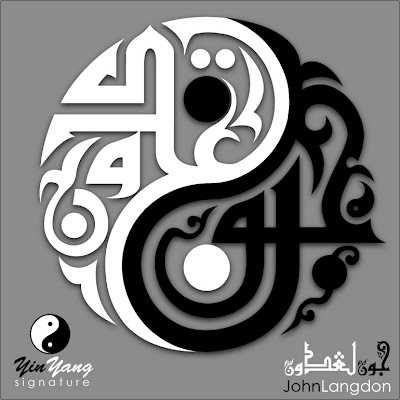What is a Wry Tail
SC Desert Star Arabians


The literal definition of "Wry Tail" is: A horse with an a wry tail doesn't have the ability to hold the tail in a flagged and straight up position. Many horses hold their tails to one side or the other, but this isn't an a wry tail, if they CAN carry it correctly.
An Internationally recognized, gentle trainer that has a good grasp on true wry tail wrote:
"The wry tail is an interesting issue, wonky tail carriage is not particularly penalised in European rings (and hence I think we have more of them as they not been selected against). Thus I think I don't feel particularly strongly about the issue. I have only ever seen a couple who appeared to carry their tails off to the side ALL the time and this I don't like at all, the tail dock on both these horses seemed floppy and twisted. However there are many, many degrees of sideways carriage, lots of horses carry it sideways until they are REALLY excited - then it flags and some carry it off to both sides alternately. At a mild to moderate degree, even though I agree it is aesthetically not as lovely as the bolt upright flag, I would struggle to link the sideways tail to any performance deficit. Probably the best jumping Arab I ever rode straight Spanish Galerito carried his tail off to a kink most of the time and only flagged in when really sparked. This horse had a 'dwell' in his trot and such power he could jump anything out of this trot so critiquing him as a performance horse for his tail carriage would have been trivial to say the least. Most of Lodge Farm's race winners carried their tails wonkily to some degree and I never found evidence of it being unanimously connected to going disunited in canter which some horses are more prone to than others. (even after extensive chiropractic investigation) For the reason that it was not physically restricting I would have to place it as a pretty minor fault, even though it is not as 'pretty' as straight carriage. It is still better than no carriage !
I think that overall we have got far too reliant on breeding for whatever pleases our eye not to what actually affects a horses performance....... I have not seen a really sideways tail in the American showring, but feet ?? There are some humdingers out there, vertical and about 3 inches wide on a 15'2 horse. Why are they ignored ? Is it because they are half hidden in the dirt, and the judge has to watch them move up a step to check that the first impression was correct - is is really because judges just can't be bothered to concentrate and be careful ?. Or is it that judges don't want to penalise something the audience can't see in case the audience get stroppy with them for dumping an otherwise lovely horse ? Or is it because there is such a consensus about not bothering to judge legs properly, both in Europe and in the States that no judge wants to step out of line and possibly not be invited to judge again......... Great reasons all of them. ! Those kind of feet do affect performance. I know of a mare with one those horrors in front who was broken and always looked slightly unsound. It was never satisfactorily resolved whether she was actually unsound or just moved differently on each front leg because the angles of the feet were so different. The effect was probably exaggerated by her lovely long cannons. However it didn't look good and needless to say her ridden career was shelved. I regret to say that she went back to being a halter horse and won again (this is over here). I call that an embarrassment for our breed. Judges getting picky over sideways tail carriage in the ring is a complete irrelevance by comparison !"
A European judge states:
"The European rules don't say anything about wry tails, or the scelera in the eyes—which Americans fuss about so much. I think that a wry tail is generally regarded as a very minor fault. As long as it is not extreme, it doesn't bother me too much. Sometimes a horse will do it on and off, and I've noticed that horses with a very long, thick dock have a tendency to do it more frequently. I consider leg faults and other conforrmational defects far more serious."
An Internationally recognized, gentle trainer that has a good grasp on true wry tail wrote:
"The wry tail is an interesting issue, wonky tail carriage is not particularly penalised in European rings (and hence I think we have more of them as they not been selected against). Thus I think I don't feel particularly strongly about the issue. I have only ever seen a couple who appeared to carry their tails off to the side ALL the time and this I don't like at all, the tail dock on both these horses seemed floppy and twisted. However there are many, many degrees of sideways carriage, lots of horses carry it sideways until they are REALLY excited - then it flags and some carry it off to both sides alternately. At a mild to moderate degree, even though I agree it is aesthetically not as lovely as the bolt upright flag, I would struggle to link the sideways tail to any performance deficit. Probably the best jumping Arab I ever rode straight Spanish Galerito carried his tail off to a kink most of the time and only flagged in when really sparked. This horse had a 'dwell' in his trot and such power he could jump anything out of this trot so critiquing him as a performance horse for his tail carriage would have been trivial to say the least. Most of Lodge Farm's race winners carried their tails wonkily to some degree and I never found evidence of it being unanimously connected to going disunited in canter which some horses are more prone to than others. (even after extensive chiropractic investigation) For the reason that it was not physically restricting I would have to place it as a pretty minor fault, even though it is not as 'pretty' as straight carriage. It is still better than no carriage !
I think that overall we have got far too reliant on breeding for whatever pleases our eye not to what actually affects a horses performance....... I have not seen a really sideways tail in the American showring, but feet ?? There are some humdingers out there, vertical and about 3 inches wide on a 15'2 horse. Why are they ignored ? Is it because they are half hidden in the dirt, and the judge has to watch them move up a step to check that the first impression was correct - is is really because judges just can't be bothered to concentrate and be careful ?. Or is it that judges don't want to penalise something the audience can't see in case the audience get stroppy with them for dumping an otherwise lovely horse ? Or is it because there is such a consensus about not bothering to judge legs properly, both in Europe and in the States that no judge wants to step out of line and possibly not be invited to judge again......... Great reasons all of them. ! Those kind of feet do affect performance. I know of a mare with one those horrors in front who was broken and always looked slightly unsound. It was never satisfactorily resolved whether she was actually unsound or just moved differently on each front leg because the angles of the feet were so different. The effect was probably exaggerated by her lovely long cannons. However it didn't look good and needless to say her ridden career was shelved. I regret to say that she went back to being a halter horse and won again (this is over here). I call that an embarrassment for our breed. Judges getting picky over sideways tail carriage in the ring is a complete irrelevance by comparison !"
A European judge states:
"The European rules don't say anything about wry tails, or the scelera in the eyes—which Americans fuss about so much. I think that a wry tail is generally regarded as a very minor fault. As long as it is not extreme, it doesn't bother me too much. Sometimes a horse will do it on and off, and I've noticed that horses with a very long, thick dock have a tendency to do it more frequently. I consider leg faults and other conforrmational defects far more serious."
Website designed by Cath copyright 2012

Liz Dieter